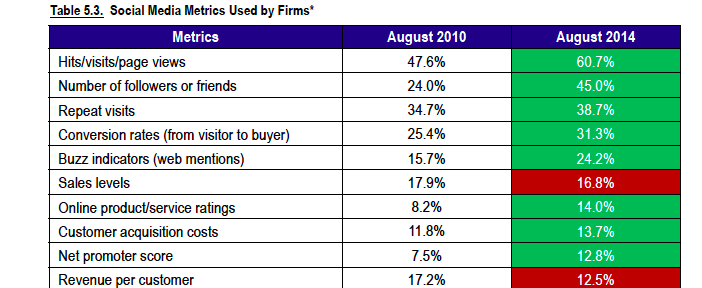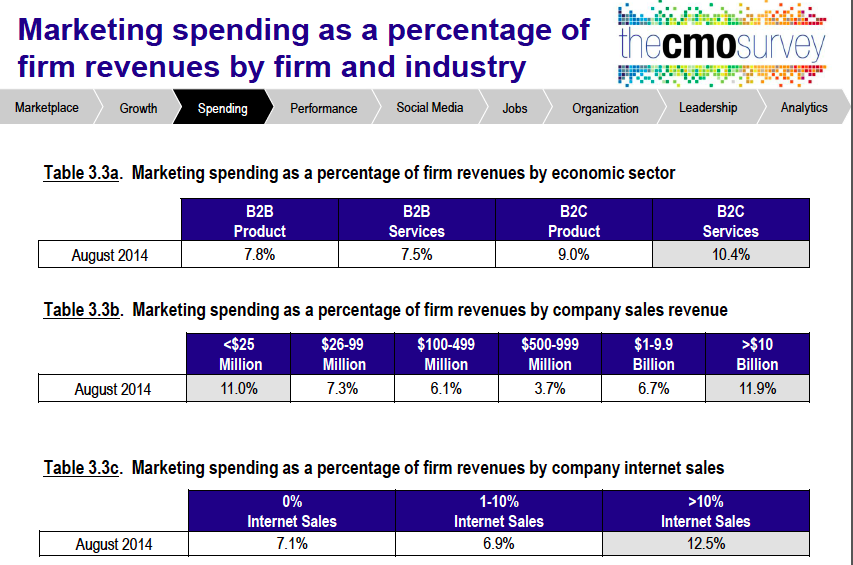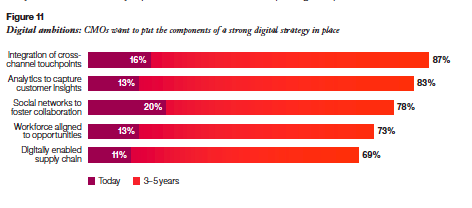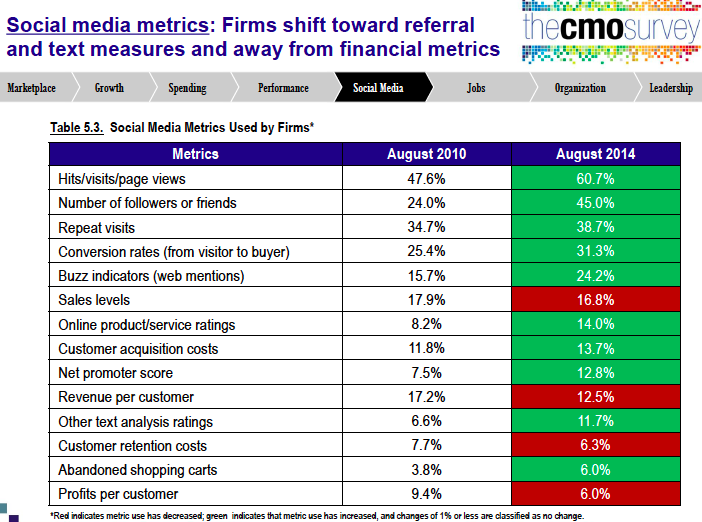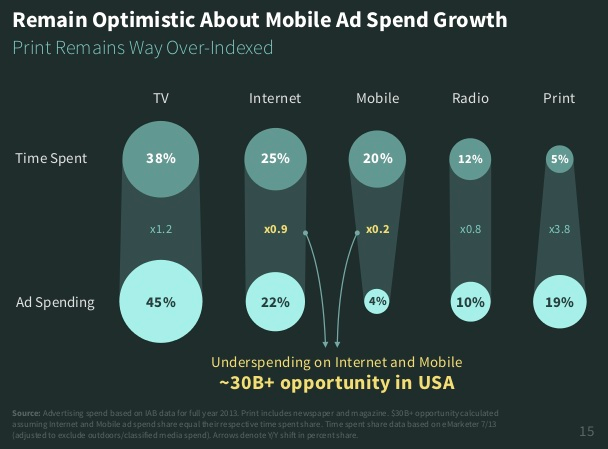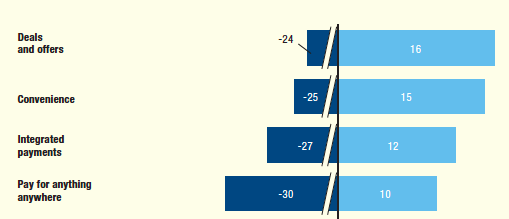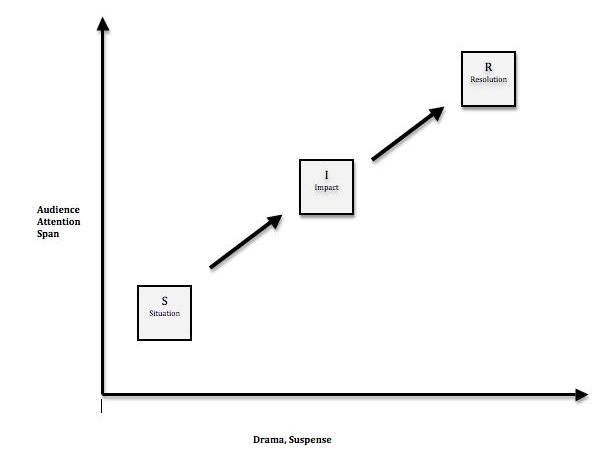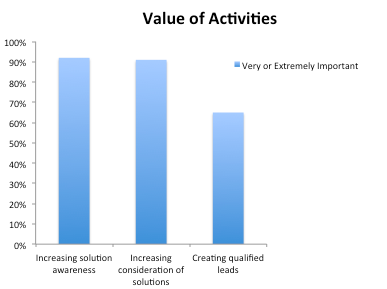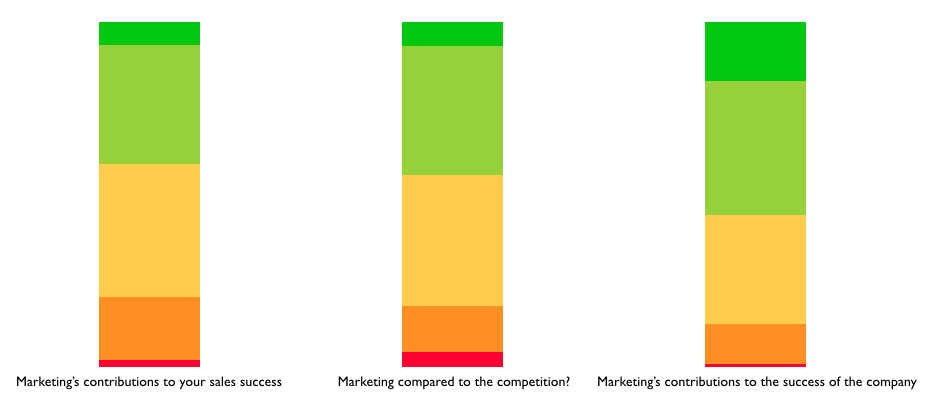Our digital Christmas card to our sister office in Munich. No one does Christmas better than the Germans. Thanks to Michael Holder in our Cincy office for helping us put this together. Merry Christmas all! Watch here.
Author: scott.gillum
5 Key Tips and Data Points to Defend Your 2015 Marketing Budget
The 2015 planning season is upon us. It’s the time of year when the C-Suite is busy sharpening their elbows to ready themselves for the budget brawl. To help arm marketers for this blood bath, I’ve pulled together benchmarks and/or research needed to defend and win marketing dollars. Here are some answers, and sources, for your five toughest budget questions.
- How much should we be spending on marketing? It’s a classic question and a favorite of CEO’s everywhere. The mere mention of it is enough to stop marketers in their tracks. Fortunately, the AMA, McKinsey and the Duke Fuqua School of Business have got your back with their 2014 CMO Survey. Section 3 of the report contains data from 350 marketers on their spending from digital to people and programs. The research even breaks spending out by size of company, type of company (B2B or B2C, and B2B products or services). The report is packed with valuable information — it’s a “must have” for any marketer this year.
- What should the mix between people and programs? This question comes shortly, if not immediately, after the question above. Ten years ago the general benchmark ratio was 40/60, forty percent of the budget went to staff and the remaining to program spending. Now it’s the reverse, 60/40 people to program spending, for a number of reasons. The biggest factor has been the need for specific skill sets that are in high demand relating to analytics, social media and content marketing have driven up staff cost. Need more information, here’s a useful infographic on the real cost of social media, including salary cost for staff.
- Where should we invest? Typically, this is a teaser question, and could also be asked as; “if you had an incremental $1 (or $10K, $100K, etc.) where would you invest it?” Keep in mind that just because the CEO is asking the question doesn’t necessarily mean you’ll get the incremental funding, but you better be able to answer the question. To do that see IBM’s C-Suite Priorities report entitled The Customer-activate Enterprise. The research, collected from face to face interviews with over 4000 senior executives, provides insights into the priorities of each member of the C-Suite. The top priority in the report is Digital. Including everything from increasing responsiveness to customers, to making the organization more agile and responsive. Specific priorities for CMO’s, it’s about capturing; analyzing and using customer data across touch points.
- What’s the payoff/return/business impact of Social Media? There are a number of sources that you could tab into to help develop a response. I’ve always been a fan of HubSpot’s State-of-Inbound. Additionally, if you have downloaded the CMO Study mentioned in bullet #1, there is a whole section on Social Media (see graphic). Interestingly enough after four years “Visits” and “Followers/Friends” are still the leading social media metrics today. Personally, I’m not a fan, try using measurements related to engagement. Note the gains being made in “Conversion Rates” and “Buzz Indicators” over that last four years. This is the result of the development of better measurement tools. Here’s a great cheat sheet from SocialMediaToday on the Top 50 Tools. For digital and mobile benchmarks download Adobe Digital Index’s Best of the Best Report.
- What return should we expect from our marketing investments? This is a loaded question. Recognize that what the executive really wants to know is: “What will marketing do for me and/or my group?” As a result, answer the question based on their area of interest, and in their language. If it’s a sales executive, talk in terms of new leads, customers and pipeline value. If it’s the CEO, talk about brand value, revenue growth or customer retention or loyalty. Rarely is this question asked on behalf of the organization as a whole. Even more rare, is the executive that believes the numbers you’ve quantitatively derived for a ROI.
Lastly, go in strong and ask for a bigger budget. Here’s a report to keep in your back pocket in case you need it, Gartner’s CMO Spend 2015: Eye on the Buyer. The report will support your request for an increase, and maybe help the “powers that be” understand that if you’re not getting a bigger budget, your key competitors probably are…now go get ‘em!
Why Apple’s Touch ID Could Be Huge – and It Is Not The Reason You Might Think
Like much of the world I tuned in last week to watch Tim Cook unveil the latest Apple products and services. Afterwards, I was curious to see the analysts and so called “tech experts” reactions on the announcement. Most were ho-hum “nothing new here”, and “it was what we expected,” the market response was similar, with the stock getting a small bounce then falling after the announcement.
Apple, better than anyone, gets the “use case” right for its technologies. And it is why I was surprised by the media and analysts reaction. Listening to the announcement and recap, most of the focus on Apple Pay was on Retail use. In the press release, Apple discusses the near field communication (NFC) technology, names its retail, credit card and bank partners. Pointing out that there are merchants ready to accept Apple Pay as a very secure payment method. But nothing that really got the media excited, go into any Starbucks on any day and you will see plenty of mobile transactions.
Digging a little deeper, buried at the bottom of the announcement is something more intriguing – “Touch ID” which enables “one touch checkout” for Online Shopping Apps. Say good-bye to the hassle of entering your credit card information on the small screen. See something you like, touch it, and it’s yours!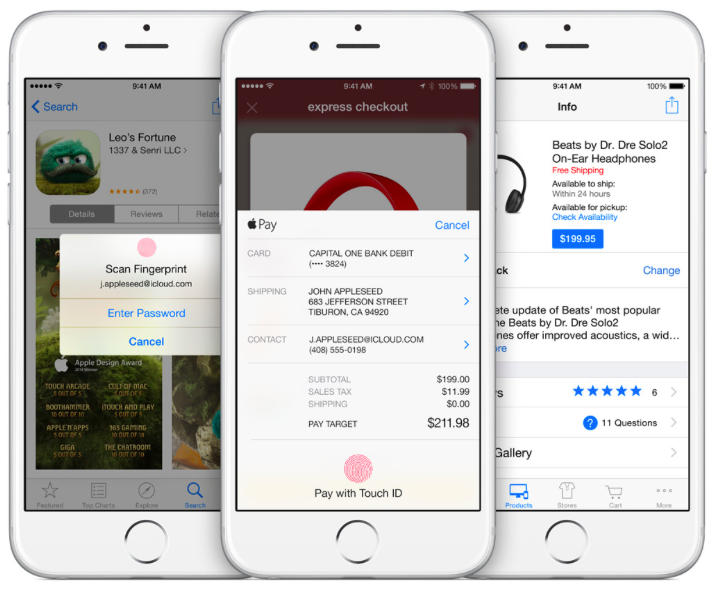
App developers have already started building Touch ID into retail apps. On the same day of Apple Live, Target announced that it has adopted the Like2Buy platform that which allow the chain’s Instagram followers to buy products featured in photos and Target is now integrating Touch ID into its mobile app. Touch ID for mobile apps is the big deal, but not for the reasons you might think.
Apple is a “big play” kind of an organization. A $349 watch, and people upgrading to an IPhone 6 isn’t going to move the needle for a $171 billion dollar company. Apple Pay helps but that’s a basis points play that gets split multiple ways between the service provider, credit card company, the bank, etc., and it will take years for it to be widely accepted. So where’s the “big play” with Apple Pay?
It’s mobile advertising. According to Mary Meeker in her 2014 Internet Trends report, mobile advertising represents a $30B opportunity in the US alone, based on time on device. Ad spend has lagged because of issues relating to tracking and measurability.
This is why Apple Touch ID is so important; it has the potential to improve tracking, measurability and ROI significantly. With TouchID the buyers never leaves the screen to transact. Attribution, tracking and conversion rates will improve, but the challenge remains — how do you get consumers to transact?
According to McKinsey’s From solutions to adoption: The next phase of consumer mobile payment, you give them a special deal or offer – an ad. There’s the closed loop.
Most important Drivers of Mobile Payments
Respondents ranking most important (light blue) and least Imports (dark blue)
Apple has had a long history of introducing products at the beginning of the “hockey stick”, usually relating to the consumer adoption curve of new technologies, this time the hockey stick is mobile advertising. The real payoff of Apple Pay for now, in my humble opinion, is not retail, it’s mobile and it is about buying on your phone versus paying with your phone.
Stop Blaming Price – 3 Real Reasons Why Deals Are Lost
The team killed it. The presentation was flawless. The proposal was outstanding. You covered all of the bases, but you lost. Searching for answers, the only thing you can think of is that the other guy must of “bought the deal,” right? In the article entitled; Why B2B Sales Leads Don’t Convert (and Who Is to Blame) Marketing Profs.com highlights a recent survey of close to 200 marketers, sales professionals, and president/CEOs on their thoughts on why deals were “lost.” Not surprisingly, 60% said that “price” was the main reason, but what may surprise you is that percentage is wrong. 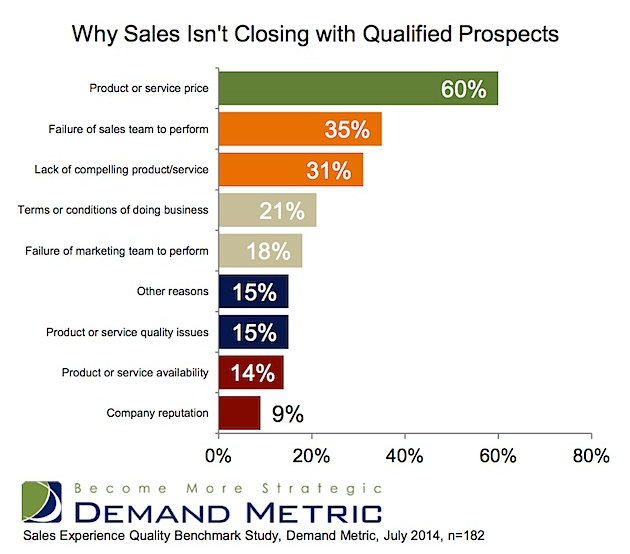
To truly understand why deals are lost, you have to get feedback from buyers. Having conducted numerous post mortem analysis of lost deals, and buyer behavior research, here’s what I have learned. Roughly one third of all buyers consider price as one of, or the main driver of a purchase decision. Pure price buyers represent about 5-10% of all decision makers. The remaining portion (20-25%) are value buyers who may, but don’t always, buy the lowest priced product or service. Using those numbers, the research overstates “price” as the reason for a loss by a factor of 2X. What accounts for the remaining thirty percent? Here are three common reasons for losing a deal, that doesn’t involve price.
- Low investment in the relationship – deals are not solely rationally made purchase transactions, especially as price and product complexity increases. Selling bigger ticket items involves a degree of trust built between a vendor and a buyer. Recent research by Fortune and gyro found that 65% of executives believe subjective factors that can’t be quantified (like a company’s culture and values) make a difference when evaluating competing proposals. Even more executives (70%) said that a company’s reputation was a critical consideration in the decision making process. Investing in relationship building with buyers takes time but as the research shows, it’s worth it. If buyers say that the only time they hear from a rep is when he/she wants to sell them something…that investment is not being made.
- Focusing on the wrong message – focusing on only selling the business value (functional benefits, business outcomes) of a product limits sales ability to make the case for a higher price. Connecting the value the product delivers to the buyer, on a personal level, helps reps broaden the conversation. According to CEB research, not only are you twice as likely to win the deal by focusing on personal value drivers
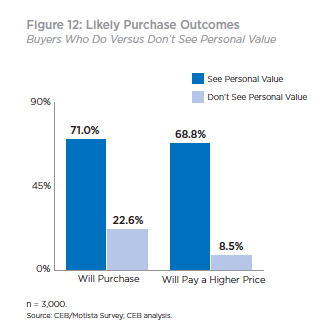 (professional and personal benefits, like a promotion, admiration from peers, etc.), but also, buyers are eight times more willing pay a premium. To do this effectively sales people need to be able to put themselves in the shoes of decision mak ers. They need to understand their buyers’ situation, role, relationships, etc., and sell the value of the product or service to those unique needs. If reps only know how to sell “feature functionality” the conversation will all too often come back to price.
(professional and personal benefits, like a promotion, admiration from peers, etc.), but also, buyers are eight times more willing pay a premium. To do this effectively sales people need to be able to put themselves in the shoes of decision mak ers. They need to understand their buyers’ situation, role, relationships, etc., and sell the value of the product or service to those unique needs. If reps only know how to sell “feature functionality” the conversation will all too often come back to price.
- Missing the real buyer – there is no guarantee that past buyers will be key decision makers in future purchase decisions, or on other types of products. Years ago, I did a post mortem analysis for a medical equipment company on an innovative new product. Sales said they were losing deals because it was priced too high. The analysis proved that they were both right, and wrong. The traditional buyer, did in fact, believe that the product was priced too high compared to others in the market. But a new set of users who had become the primary decision makers had emerged. This group was using the innovative technology as a revenue generating procedure. As a result, they valued the product differently and were willing to pay a premium. Deals were lost because the company didn’t understand how buyers intended to use the product, and as a result, they missed the key decision maker.
The simple answer is that deals are lost because the case for the value of the product or service has not been adequately expressed to meet the needs (professional, personal or both) of the key decision maker. Blaming “price” is a convenient crutch that shifts accountability to the product or pricing team, and away from sales and marketing. Finger pointing may make us feel better about our role, but it doesn’t fix the problem. If you are truly intent on increasing win rates dig deeper into understand why, I can guarantee you won’t find that it is “price” 6 out of 10 times.
The Ugly Side of Content Marketing
I just spent a week in the Caribbean on an island with lovely beaches and an incredibly high cost of living. The island has no income tax, so generates the majority of its income from tourist like you, and I, through a very large VAT tax.
Simple staples, like bread, are priced so high it made me ask my wife “How does anyone afford to live here?” The answer became apparent as the week went on — you’re either very wealthy (not us), or that you live very simply.
As the week progressed, I found myself appreciating the fact that less could be more. Once my awareness was raised, I discovered a certain elegance in the simplicity. For example, the cabinets and crown molding in our room were white washed rather than covered with layers of expensive paint, actually highlighted the natural beauty of the wood grains.
 Arriving home to the states and the “routine” with my newfound appreciation for minimalist living, I found that I am now highly sensitized to the waste within marketing. The unnecessary use of “empty” words used to make extravagant and/or over inflated claims that is cluttering copy.
Arriving home to the states and the “routine” with my newfound appreciation for minimalist living, I found that I am now highly sensitized to the waste within marketing. The unnecessary use of “empty” words used to make extravagant and/or over inflated claims that is cluttering copy.
It appears that with the proliferation of content marketing we are starting to see an ugly underside. Marketers focused on getting “views” and social shares, are in a “war of words” that is producing empty promises in the form of audience grabbing headlines that fail to pay off with insightful or promised content.
Words like “epic” or “iconic” once rarely used, (and when they were, they were actually describing something that was of a significant historical event) are now used to describe everything from trade shows to webcasts, so overused, they have become meaningless.
In the past, when someone made the statement that they were the “Leader in”, they actually were, and could back it up. Or when they created a “Top 5 List or Best Practices”…they had the research to actually prove it. Now marketers randomly use those enticing titles in headlines in a desperate attempt to get noticed.
Fueling this are insights from content marketing tools are enabling marketers to engage in this “copy cat” hype game. Just pick a topic, go to a site like BuzzSomo, search for the most popular headlines, and then build something similar.
Content marketing, and for that matter Native Advertising, can benefit audiences and be effective marketing tools, but not if these practices continue.
Thanks to Steve Jobs and Apple, simplicity and “clean lines” are now pervasive within design. It has helped to streamline and simplify brands, from logos and website to products. The time has come for it to influence copywriting and content production.
Yes, it takes longer to write a shorter sentence, but it’s worth it. As the late great Maya Angelou once said, “Easy reading is damn hard writing. But if it’s right, it’s easy. It’s the other way round too. If it’s slovenly written then it’s hard to read.” As marketers, we have to do better, be better. Strive for elegance in your craft. Don’t paint the essence of what you want to say, or promote, with layers of needless or empty words.
If you want someone to read your content — be credible. If you want it shared, say something insightful or newsworthy. That is the way it has been, and will always be. It’s that simple.
Best Practices for Creating an Elevator Pitch
I found this in a file earlier this week. It was part of a pre-work exercise for a well known professional services firm. We were engaged to help them redefine their corporate value proposition and messaging architecture. I thought it might be useful for the group.
Who Uses It?
Everyone:
- Marketing Teams
- Salespeople
- Recruiters
- Investor Relations.
What You Should Not Do:
Most elevator pitches miss the mark because:
- They are too long–“We have an elevator pitch but it requires a building with 700 floors…”
- They are too technical
- They lead with bragging points or product features — “We are the leading provider with 54 offices in 29 countries.”
- They are ego-centric rather than customer-centric—An elevator pitch is a response to the question what do you (or what does your company) do? When a customer asks this they mean, “what do you do for me? “
How To Do It Right:
- Be customer-centric
- Be concise (30-60 seconds max)
- Be true and “ownable”
- Convey business outcomes, not bragging points or features.
- Show, don’t tell— provide a story that will show a customer what your company will do for them.
Best Practices:
Elevator Pitch Should ‘Tell a Story’ that:
- Addresses: Situation, Impact and Resolution
- Starts with customers; ends with outcomes
- Quantifies your value proposition
Try beginning with a provocative statistic
It should consist of three parts:
- Situation – cite the dilemma, pain, difficulties or complications that the prospect faces…
- Impact – quantify the impact that the situation is having on the prospect’s bottom line…
- Resolution (Solution) – how do you solve the problem?
Are Marketers Measuring the Right Things?
Tell me if you have heard this before; “we need more, and/or better leads.” The chances are, if you’re in hi-tech marketing you may hear it on daily, weekly and monthly basis. Why? According to Forrester consultant Tom Grant, it’s because of the need to feed the funnel.
In his report Tech Marketers Pursue Antiquated Marketing Strategies Grant compared hi-tech firms to other industries “B2B technology companies treat marketing as an opportunity to sell new products and services to new customers.” As he stated “the product is the axis around which marketing efforts turn,” and as a result, the primary objective of marketing is to produce leads.
Similarly, marketers have long held the belief that because of sales short-term focus on making quarterly objectives, it either lacks the appreciation of, and/or the sophistication to understand anything other than lead gen, for example longer-term brand building and awareness activities.
But what if both of these viewpoints were actually wrong. What would happen if you asked sales what they valued, rather than assumed you knew the answer? How might it change how marketing thinks about its impact on the organization?
For one B2B Tech Company, feedback from the sales force is helping them refine their value to the organization. “When it comes to enabling the sales force, we’ve previously relied on what I call “measurement-by-anecdote.” Our goal with this study was to quantify what sales values from marketing so we can focus on the things that make a difference.” said Rick Dodd, SVP Marketing of Ciena, a $2 billion global optical and packet networking company.
To gain that insight the company surveyed its global sales force, including five types of sales reps covering five different account types. Over 400 sales reps provided feedback on their priorities for marketing and marketing’s performance.
According to sales, the highest ranked marketing activities were at the top of the funnel, 92% of sales said that increasing the awareness of solutions was very or extremely important, increasing consideration was close behind at 91%, only 65% mentioned lead generation.
“Our sales force is very experienced; they understand that technology and industries change quickly. We’ve obviously been successful positioning ourselves for today’s market, and now we want to take best advantage of the big shifts in our landscape. The survey showed us that for sales to be successful, marketing has to be able to change customers and prospect perceptions,” according to Dodd.
Perhaps the most interesting insight to come out of the research, is how Ciena is now thinking about measuring and reporting marketing’s impact on the organization. “Measuring pipeline value is a struggle in our business”, said Bill Rozier, VP of Marketing. “We have long, complex sales cycles that make it difficult to isolate marketing’s impact.”And they are not alone it in that challenge. The Aberdeen Group’s recent Demand Generation study found that 77% of respondents rated visibility into lead performance across stages as very valuable, but only 43% indicated they can do thi effectively.
Instead of spending a lot of time and energy in trying to perfect an imperfect process, thecompany is focusing efforts on measuring marketing performance at the macro level. “At the end of the day, our performance is ultimately measured in sales success, so that’s what we are focusing on measuring”, said Rozier.
To do that, the company has created a quarterly dashboard from the survey. Two regional sales organizations each quarter will be asked to evaluate marketing’s performance in three areas: 1) Marketing’s contribution to sales success; 2) Marketing’s performance compared to competitors; and 3) Marketing’s contribution to the success of the organization.
It’s a unique approach, and perhaps one that should be considered by others, because the challenge in performance management is often in defining the right metrics to drive the intended behaviors.
Ciena’s approach, as Dodd concludes, is to put the focus on the right conversation; “As we learned through the research, contributing to the success of the sales force isn’t just about one thing, it isn’t just lead gen. I appreciate that they give us credit for doing a good job when compared to competitors, but what we’re most interested in understanding is how well are we doing in enabling them to win. If the sales team rates our contributions as being valuable to their personal success, then we know we’re doing the right things.”
Building a Corporate Persona is the Key to Differentiating Your Company
Take out a piece of paper, and write down what you think makes your company different from its competitors. Now, Google your competitors and see if you can tell the difference between what you wrote, and how they describe themselves. If it sounds the same, keep reading.
Let’s say you’re the CEO of a fortune 500 company looking for some advice. Two top tier global consulting firms are recommended, and based on their website descriptions of “Who They Are” which one would you chose?
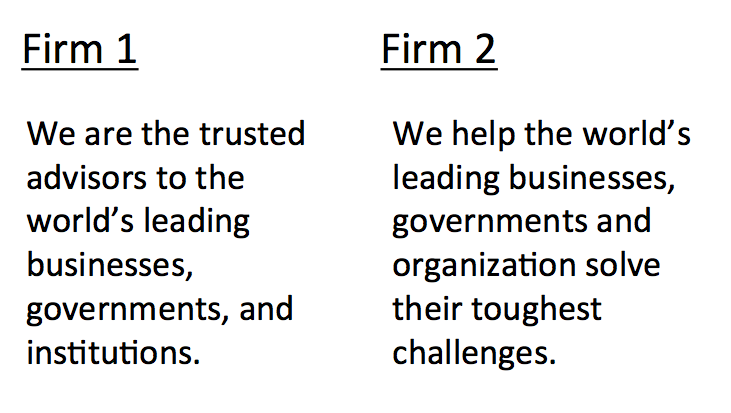
Can’t decide? That’s the challenge I’m talking about. Although one firm uses “advisors”, they are describing what the firms do, not who they are, and as you can see, the sound the same. If some of the smartest guys in the business are getting it wrong, and they’re the “advisors to the world’s leading businesses” you shouldn’t feel bad.
Why is it so hard? There are two key reasons; the first being in B2B, we are conditioned to think that what we do is who we are. It’s the Achilles heel of effective marketing communications, the bad habit of over communicating and focusing what you sell (what you do) versus who you are (what makes you different).
Making things worse is when B2B marketers talk about the value of what their company does, they use terms associated with business value, the functional benefit or business outcome of the product or service being sold (e.g. increase revenue, reduce cost, retain customers, etc.). It’s non-differentiating because competitors use the same language, and that’s the second major challenge to overcome.
Over the years, marketing communication has evolved from talking about how great the company was to talking about what it does for customers. Thankfully the “we’re number 1” days are over but unfortunately, the “what we do for customers” has been defined by what the company sells. It is time to evolve again and speak to more about the “DNA” of the organization. Research from CEB has shown that buyers figure out what companies sell (what you do) relatively quickly. It takes them much longer to figure out why they should buy from one company or another.
And surprisingly, when they do make the decision, it often has little to do with “business value” of the product or service itself, and more to do with the emotional connection they feel to it, or to your brand. Buyers are not the rational beings we once thought, they do business with businesses for very personal reason, according to the CEB research. As a result, they want to get to know the company as well as they know the product or service.
So, how do you “humanize” the company? Here are some tips to get your started:
- Ask customers – sounds obvious, but rarely happens. Ask them why they do business with your organization and others. You might be surprised by what you’ll learn; it may have nothing to do with your products or services. Use this information to communicate back to them “who you are” in the language and context that is meaningful to them.
- Survey employees – this may help uncover why the organization can’t get on the same page when it comes to defining the company. Employees have a tendency to define the company and what it does, based on their own experience with the products they know, and customers they serve. As a result, they have a myopic view of the organization. You will find multiple views on your value, and the type of company you are, across your organization.
- Decide on the type of company you are – pick up a copy of Michael Treacy’s Discipline of Market Leaders. In it, Treacy and Fred Wiersema define three value proposition types based on business models; Operational Excellence, Product Leadership, and Customer Intimacy. Use this framework as a starting point to define your organization and its’ language. It also helps get everyone on the same page.
- Create a persona – once you have consensus on the type of organization and its value to customers, it is time to figure how to differentiate it. In this step, use brand archetypes to help define the company persona. Here’s a free list of 40 archetypes. Create a working session and have the group discuss how the company views the world, how it reacts to bad or good news, how it speaks — what is the tone? Keep the conversation away from what the company makes or does, and on the organization itself.
Buyers have changed. They want to know who you are, because they already know what you do. And they’re looking for a little of themselves in your brand. Relate to them on a human level. Tell them who you are in a way that connects with them. If you do, it will differentiated you, because like people, no two organizations are exactly alike.
The Next Generation of Apps Will be All About You
I had a dream last night that I was hiking along a stream with my family. The same path we’ve hiked and geocached dozens of times. Except this time, Siri’s voice interrupted our hike and asked if we’d like to play a game.
An app I had downloaded came on, and using GPS, our hiking history, and topographical maps of the area, had created a real time obstacle course, complete with the map, times to achieve, and “land mine” rocks to avoid. The “App” had proactively invaded our routine hike by creating a totally new experience.
When I awoke I wondered if I had read this, or if it was truly a dream. Concluding that it was a dream, I knew the article that helped to “inspire” it, and perhaps, playing a little too much Candy Crush may have lead to the creation of the “land mines”.
Earlier in the week, I had read about fitness apps that, for the first time, were positively impacting behaviors. I thought it was noteworthy because even with time spent on mobile devices continuing to grow, we have not invited them into our lives as an active participant, although my teenager may disagree with me. In 2013, Gartner reported consumers spent an average of 2 hours and 28 minutes per day on devices (phone and tablet), and 80% of that time spent inside apps.
Apps have been in “ondemand” mode waiting for us to engage. They haven’t been invited “in” because, for the most part, they haven’t been smart enough to provide us with value. With the era of the “internet of everything” we are entering a new world of connectedness. With devices able to communicate with each other, and soon apps, is this the beginning of new phase of app development?
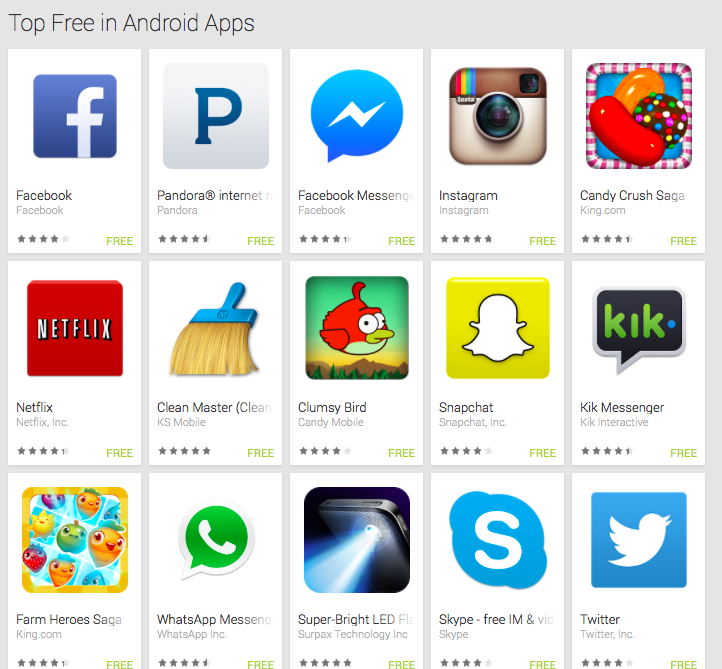
An era that goes beyond the first generation of “dumb” apps, similar to “dumb terminals” of yesteryear, in that they, with a few exceptions, mostly games, are nothing more than version of existing websites that have been optimized for mobile devices.
Next generation “smart” apps will have the potential to become an active part of our lives by tracking, and understanding our unique behaviors and habits, to creative highly personalized recommendations and experiences. But by 2017, Gartner predicts that mobile apps will have been downloaded more than 268 billion times, and mobile users will provide personalized data streams to more than 100 apps and service every day
Our mobile devices, which many of us carry 24/7, can remember where we’ve been, what we’ve done, and when we did it. They can listen in on our conversations, as we’ve learned, and can access data we have stored on the device and in the cloud.
As a result, be on the watch for the following in the near future:
- The emergence of “small data” – the value and functionality of your mobile device will shift from connectivity to data capture and transfer. In a sense, your phone will act as your own “black box” recording your daily activity, similar to a flight recorder. Apple and Google have the ability to track activity across devices so that most of your waken hours will be captured.
- A “listening” mode on your phone – it already exists the difference is that it will be a setting you control (instead of others). This will add a layer of richness to the data that is already being collected and enable apps to pick their spots to intervene with information, recommendation, etc.
- Highly personalized experiences – apps will leverage multiple sources of data and with artificial intelligence begin to create experiences and recommendations in real time, much of it designed around our daily lives and routines.
- Intelligent Ads – yes, someone has to pay for the free apps and advertisers will be at the ready. As the apps get smarter, so will marketers! Ads will appear at the right time, with relevant offers based on your interest, past buying behavior, and preferences. Some will be rewards based on certain behaviors, and other offers will incent them.

Signs of these types of apps are starting to appear. Apps like the Sleep Cycle alarm clock, that gently wakes you by analyzing your sleep patterns. Using your iPhone as an accelerometer, Sleep Cycle monitors your movement to determine which sleep phase you are in (see the image on the right). Once learned, the phone alarm then wakes you with soothing sounds in your lightest sleep phase.
Think of the convenience of having an app on your phone listen in on conversations when you’re traveling abroad and translate, in real time, in the dialect of that region. Or, as in my dream, the value of taking a routine outing and creating a totally new and highly engaging experience.
Of course progress comes with a cost. Increasing the availability of personal data also increases the threat of those who would like to get their hands on it. In fact, it will slow the progress of this smart app generation. That said, we will see improved security built into devices, and hopefully, there will be “an app for that” as well.
Everything We Thought We Knew about B-to-B is Wrong Video
In December, I had the opportunity to be the Keynote speaker at the Bowery Capital CMO Summit in NYC. The event featured a number of high profile CMO’s speaking with an audience of mostly early stage startups (under 20 employees).
My presentation was based on the recent Forbes blog post Everything We Thought We Knew about B-to-B Marketing in Wrong. The audience also included some local media, a reporter from CMO.com wrote a summary of the speech.
http://vimeo.com/82457497

